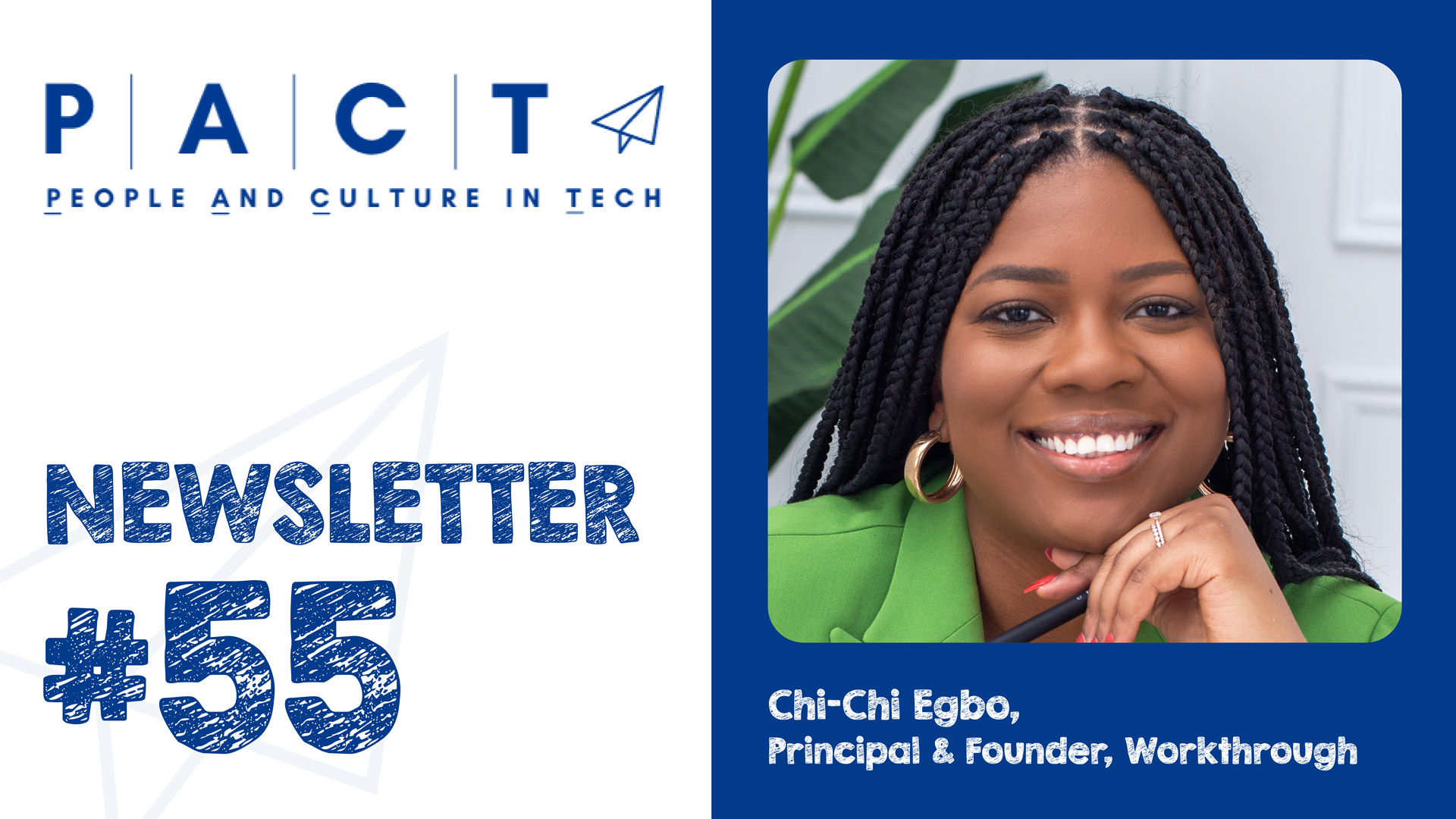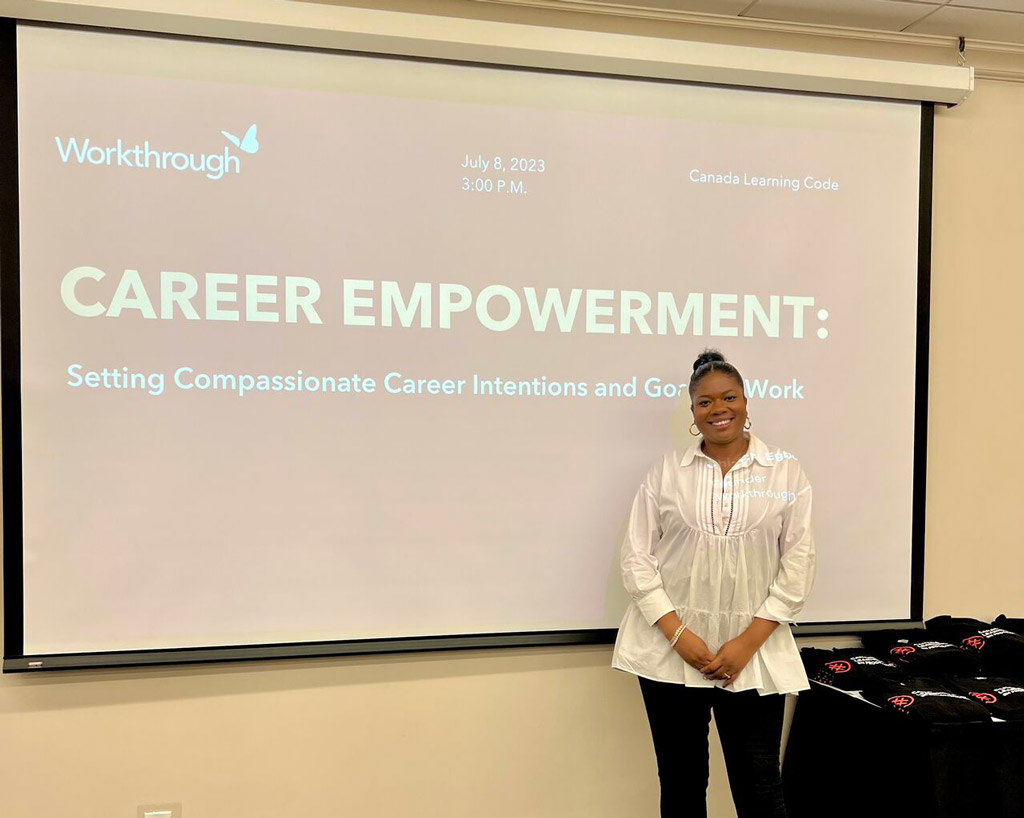Chi-Chi Egbo Helps Leaders ‘Workthrough’ Obstacles to Full Potential Professional Development
Jason McRobbie

Despite an uptick in leadership recognition of the importance of career development, Chi-Chi Egbo, principal and founder of Workthrough, still finds low scores for professional development in engagement surveys to be a common trend—even within companies seeking to capitalize upon its potential. We sit down with Chi-Chi to discuss what it takes to make professional development thrive—and why it goes wrong so often.
Key Takeaways:
- Leaders need to recognize the importance of professional development in a changing marketplace with a strong talent demand for career development and an organizational need for innovation.
- Leaders need to consider professional development in a new light and foster a more integrative approach to meet both employee wants and business needs.
- Leaders need to recognize the want for professional development will only grow in coming years, with 94 percent of employees are already willing to leave workplaces lacking career development opportunities.
When Chi-Chi Egbo took some time away from the world of work for wellness, she returned not only freshly inspired, but with a Workthrough that now works for many.
Previously a recruitment and career services pro with a passion for connecting people and opportunity, as the founder and principal consultant of Workthrough, Chi-Chi now helps companies and individuals focus on professional development that serves all parties.
“Professional development has just become so much more important to employees because the way we work, the way we learn and the ways in which we engage with our careers have all changed,” said Chi-Chi. “Gone are the days when people wanted to climb the typical career ladders. Now, people are looking for career playgrounds instead—a career lattice that allows them to move in different ways.”
That mindset serves not only the employee, but the organization as well, Chi-Chi points out, since not everyone can climb the same ladder and not everybody is necessarily suited to people management, which is where career progression has traditionally led.
Attracting next generation talent starts with the basics – job descriptions. Sign up to learn more about Generation Z’s motivators and values. Increase your quality applicants with research-backed insights and best practices. Join our next info session.
“The ladder is still there, but what leaders need to consider when building professional development opportunities are those people who want to swing across the monkey bars, who aren’t really looking for that vertical growth, but are looking for that horizontal domain expertise. With every new monkey bar grabbed, they’re adding skills that keep them engaged and growing in their careers,” said Chi-Chi, pointing out that such thinking is crucial for companies seeking to attract, retain or innovate.
Leveraging these skills is invaluable, but developing a different leadership mindset towards professional development is the key.
“The challenge with our current workplaces is that a lot of opportunities are still designed strictly around the ladder concept of upward mobility. So, when we look at how we work, learn and think about our careers, leaders need to accept that people are thinking a bit differently regarding exploration. That exploration will allow people to feel engaged and happy—and businesses to thrive,” said Chi-Chi. “And with 94 percent of employees ready to stay with workplaces offering career development, it has become incredibly important for employers to stop thinking simply in terms of everyone being happy climbing that ladder.”
Moreover, from a purely fiscal perspective, Chi-Chi points out the gains for those companies that get it right.
“For employers, there is a clear correlation between employees’ professional development and their engagement, retention and productivity levels. That, in turn, impacts the bottom line. So, companies investing at least $1,500/employee are seeing a 24 percent increase in their profits,” said Chi-Chi. “What that should be telling other employers is that when you are investing in the development of your employees, it translates directly back into the business. You get a better quality of work, happier employees, improved customer satisfaction, and a better ability to innovate and compete in the marketplace.”
In an industry that thrives on innovation, this makes getting it right crucial, Chi-Chi knows.
“So much has changed and is changing. It’s all happening so rapidly and different skills are needed. For companies to avoid that skills gap and survive, professional development is key,” said Chi-Chi. “It is not just a survival tool, though, because it can take a company from surviving to thriving.”

As for why companies are still seeing low scores for professional development on their engagement surveys despite concentrated efforts, Chi-Chi helps leaders get to the core of the conundrum.
“It usually boils down to the process and how things have traditionally been done. Above all else, leaders need to take a more integrative approach as opposed to the traditionally narrow, linear paths,” said Chi-Chi before outlining the most common pitfalls of well-intentioned professional development efforts.
Dig Deeper Than Money For Value: Decisions should not be made solely based on whether something fits within a given stipend but whether it fits within the bigger organizational picture. The most important aspect of taking an integrative approach is really stopping to take stock, assess and take the pulse of where your employees are at: ’What do they want? What do they consider key to their development? How do they like to learn? What interests them?’
Then, you need to do the same at the leadership level: ‘Where are our strengths? Where are our skills gaps? How can we better build or recommend development that addresses these needs and what the business needs as well?’ The integrative approach puts meaning behind the money.
Fully—But Flexibly—Align For Impact: Connecting those business goals back to professional development is crucial because the impact is just not there if professional development isn’t in sync with the business goals. Companies need to set a strategic business goal around how those monies are best used—for example, by constantly innovating. With people being the primary source of innovation, professional development becomes a strategic catalyst for realizing that goal.
Avoid the Management Pocket: Professional development has traditionally been linked to that traditional vertical ladder. This leads to a management pocket where it is assumed that the only way to develop people is to move them into people management. You then get people who shouldn’t be managers in manager positions. Unfortunately, that trickles back down to the employees in the calibre of development conversations and opportunities.
People managers are not just managers anymore—they are career coaches. That’s another reason that PD efforts fall short or people score low, simply because leaders don’t know what role to play in helping them choose opportunities. It’s not just about hitting targets. It’s also about having development conversations and knowing how to go about it. Without the knowledge of how to have these conversations, how to frame them, and how often they should be had—without any coaching training at all—that is a definite challenge.
Promote Awareness and Accessibility: If managers are afraid of having development conversations in a way that employees feel they are growing—not just in terms of performance goals—there is going to be a lack of awareness and access to the supports that are actually available. If managers aren’t reinforcing the opportunities and acting as ambassadors to pitch these efforts to the employees, the awareness, accessibility and impact can suffer.
Make Accountability a Two-Way Street: There is a popular notion that professional development is an employee responsibility because it is their career—‘Take charge!’ That’s old-school thinking. The truth is you need to guide people, because a lot of them do not have career management skills. Letting them know what is important to the business can be invaluable in helping people decide on the range of opportunities available. That’s the accountability piece. Managers need to be helping to own those conversations and be part of that decision-making process.
Don’t Position PD as a Perk: When you look at the definition of perk, it means ‘extra’ and that means it’s not as important—you can survive without it. When you have that idea in mind, it impacts how thoughtfully and strategically you actually make it work for your business. That is a huge error because when you approach from this perspective you are not going to put in the time, structures and strategic training behind professional development to make it more integral. It’s not a perk. It’s a necessity and the more you make it so, the more your PD will deliver the ROI.
Avoid Development From the Defensive: Many leaders recognize the need for professional development from a recruitment perspective, but hold back on true efforts because ‘people will leave eventually.’ This is PD with a rubber-stamping mindset and simply does not set these initiatives—or the people invested in them—up for success. Unfortunately, when you develop and design from the defensive, you lose all opportunity to be proactive.
Employees will leave eventually, but the point of PD is giving them a great experience while they are with you, so much so that they deliver great results and when they leave, they become your alumni and ambassadors. That is so much more important today with people on social media checking in with others who have worked for your company. You want to make sure people feel proud to be an alumnus of your organization.
One Size Does Not Fit All: Remember that everyone learns differently. A stipend works well for some, but what if someone wants to seek mentorship or to job shadow or take the opportunity to lead a project where they can illustrate their skills in other areas? All of that is professional development. It’s not just a matter of giving people ‘x’ amount of dollars and moving on. It’s about expanding that into a culture of development that can take many shapes. That tailoring can take time, but if employees are having better conversations with their managers, those avenues will open.
Five Points For PD Polish
As for how to bring the true shine and PD potential to the forefront, Chi-Chi leaves us with five key points to work through and polish within your own organizations:
- Focus on your OKRs and align your professional development opportunities accordingly.
- Position employee development as a service that is as integral to the operation of your company as any software or sales tool. Use that tool at a departmental level to help managers and employees solve problems and address opportunities from skills gaps to culture dynamics.
- Design for people, build for the business. Survey your employees to know their interests and build a skills inventory that lets you design programs that employees will be excited about—and that address the business's short-term goals and plans.
- View professional development as part of well-being and inclusion. Too often, the opportunities are drawn upon by too few and where this has the greatest impact is on racialized people, Black people, Indigenous people and women. Getting those opportunities out of the silos and in front of everyone is key.
- Remember that your ROI will only increase in years to come. By 2025, nearly 30 percent of the workforce will be GenZ —and professional development is right there at the top of their list!
As for those still waffling, Chi-Chi walked through the ‘why’ in person at the Tech Talent North Conference in Toronto, but leaves you with wise words:
“It’s 1.7 x more cost-effective to hire internally than externally, so it’s definitely better for bottom line. That said, too many still see PD as strictly a cost,” said Chi-Chi. “It is, but given that 94 percent of employees consider career development key, the question really becomes, can we afford to ignore it or do it poorly?”
BACK








